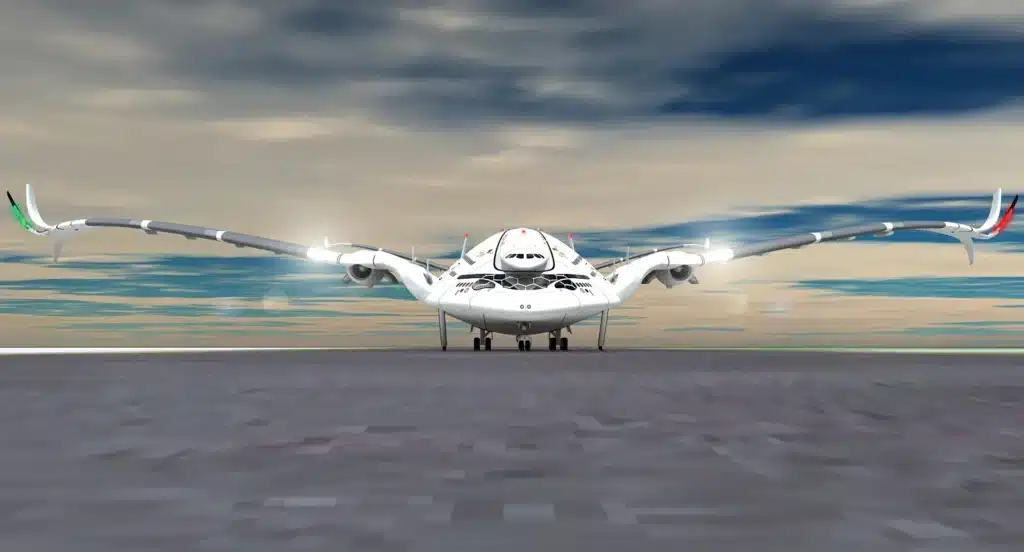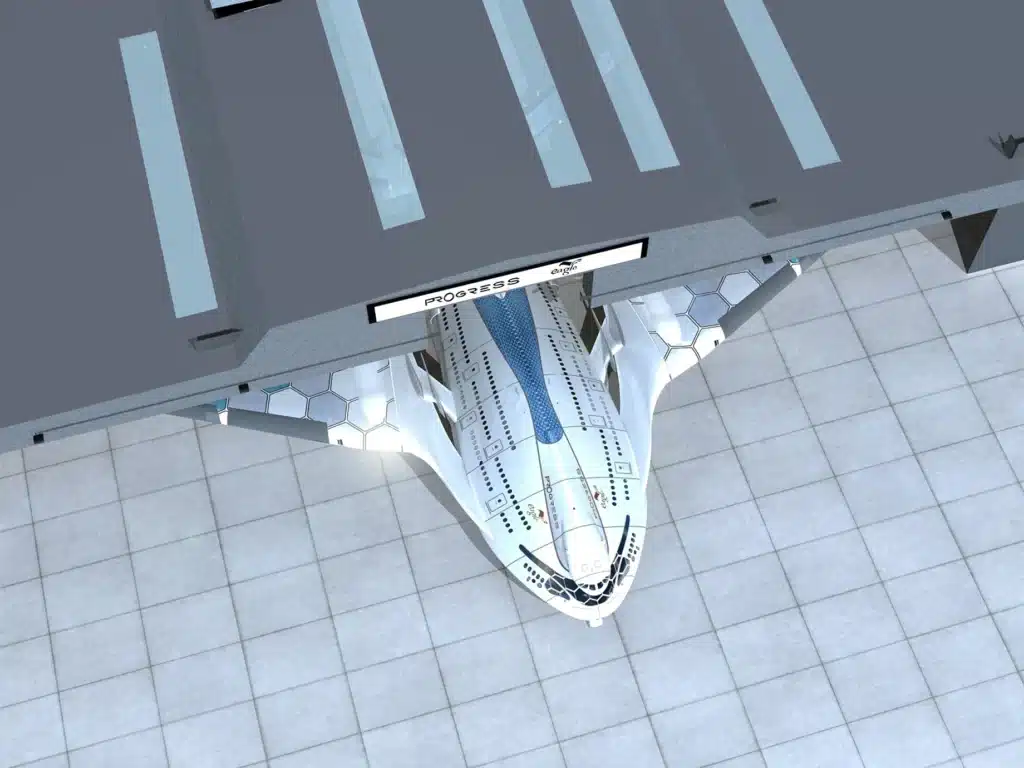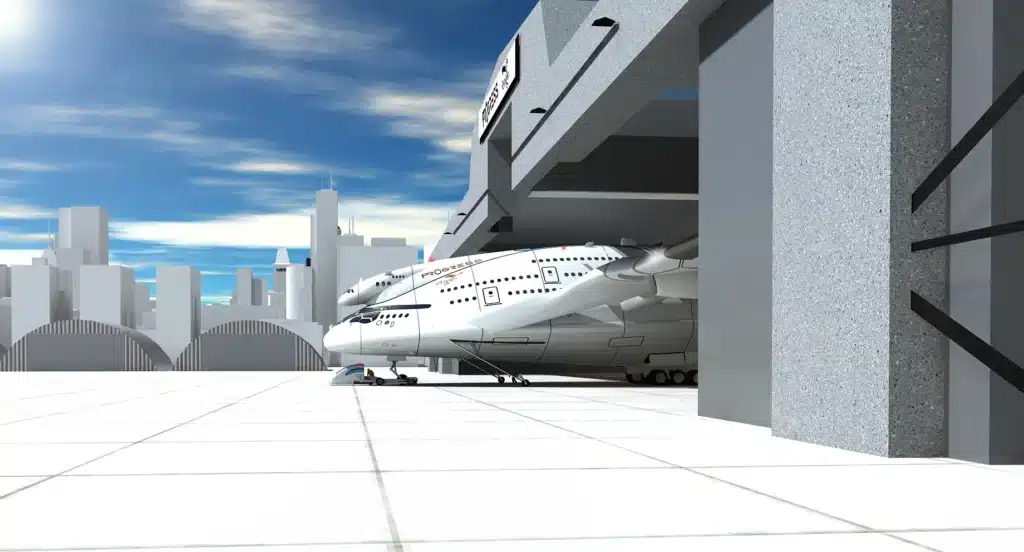Triple-decker Progress Eagle jet has six hydrogen fuel engines and is bigger than a Boeing 747
- The triple-decker Progress Eagle jet has six hydrogen fuel engines
- It’s as big as a flying hotel
- In fact, it can carry up to 800 passengers
Published on Feb 07, 2024 at 9:47 PM (UTC+4)
by Amelia Jean Hershman-Jones
Last updated on Feb 16, 2024 at 1:22 PM (UTC+4)
Edited by
Adam Gray
This triple-decker jet has six hydrogen fuel engines and it’s so big it looks like a flying hotel – its name: Progress Eagle.
Bigger than a Boeing 747, the airliner can carry up to 800 passengers.
The sprawling hotel-like layout is larger than any passenger aircraft in the world.
READ MORE! Everything we know about the finding of Amelia Earhart’s lost plane wreckage
It makes the Boeing 747 and Airbus A380 look like toy planes.

It features three massive decks, six huge engines, and a panoramic viewing lounge in the nose.
And, if you can’t get enough of monster vehicles, this collection of the world’s largest land vehicles is seriously gigantic.
The Progress Eagle is yet another stunning concept plane by designer Oscar Vinals.
And the huge and distinctive design has a shape that needs to be seen to be believed.
It features sweeping wings and a double nose.

It is hoped the aircraft would be able to stay airborne forever – similar to a ocean liner but in the sky.
It would be powered by satellites that collect solar energy.
The “One Flight” version of the concept features cabins, which are far more comfortable than notoriously cramped airline seats.
And as well as space to spread out, passengers will also be able to enjoy some impressive onboard amenities.
These include a restaurant, spa, cinema, shops, and casino.


This luxe version would only carry 300 passengers, however.
A more conventional version of the triple-decker concept would be able to transport 800 within its seat-bank concept.
Seats would be laid out in 3-2-4-2-3 configuration – unlike this controversial double-decker configuration.
With space, plus the fact that Progress Eagle is much quieter than conventional airplanes, Vinals is confident that all flyers will enjoy a comfortable ride.
One thing both designs have is a panoramic viewing lounge, which sits within the plane’s nose.

The second ‘nose’ sits above and contains the cockpit.
‘Pilot class’ tickets enable passengers to experience these up-front, stunning views.
Other tickets include a tourist and business class, with the three spread across the three levels of the aircraft.
To lift the triple-decker jet off the ground and keep it in the sky, Progress Eagle has an incredible wingspan: 96 meters (315 feet) and some 80 meters (263 feet) long – bigger than any jet in the sky today.

By comparison, the Airbus A380-800 is 73 meters (240 feet).
While the Boeing 747 measures at 70 meters (230 feet).
The concept’s Spanish designer, Oscar Vinals, used technology that will be more readily available after 2030, and proclaims it to be the plane of the future.
And the plane is also progressive in terms of its environmental credentials.
Rather than fossil fuels, its six engines are powered by hydrogen fuel cells.
That’s topped up by solar power harvested from the solar panels on its roof and wings, and an onboard wind turbine.
And this certainly isn’t Vinals’ first creation.
He dreamed up a Star Trek-inspired supersonic hydrogen plane that was built for luxury and can reach speeds of 1,100 mph (1,770 km/h).
What’s more, this impressive supersonic nuclear-powered plane would fly from London to New York in less time than a soccer game.
DISCOVER SBX CARS: The global premium car auction platform powered by Supercar Blondie
All Supercar Blondie contributors undergo editorial review and fact-checking to ensure accuracy and authority in automotive journalism. After gaining her BA Hons in French and English at the University of Nottingham, Amelia embarked on a vocational diploma from the National Council for the Training of Journalists (NCTJ). This led to numerous opportunities, from interning at Vogue to being on the small team that launched Women’s Health magazine in the UK, which was named the PPA Consumer magazine of the year for three years running. As Health, Beauty and Fitness editor, Amelia personally received a Johnson & Johnson Award and was shortlisted for both PPA and BSME titles. Since then, Amelia has created content for numerous titles and brands, including the Telegraph, 111 Skin, Waitrose, Red magazine, Stylist, and Elle, as well as being Head of Content at Vitality and Editor in Chief at INLondon magazine. “My superpower is translating technical jargon about the mechanical workings of a supercar into a relatable story you’ll want to share with your friends after you’ve read it.” After joining the SB Media family as a senior journalist in September of 2023, Amelia’s role has evolved to see her heading up the SEO output of the editorial team. From researching the most ‘Google-able’ key terms to producing evergreen content - it’s been a time of hard work, growth, and success for the editorial team and the Supercar Blondie website. “I like to think of myself as a ‘method journalist’. In other words: I live and breathe whatever I am writing about. When writing about fitness, I trained as a personal trainer, and as a beauty editor, I completed an ‘expert’ in scent diploma with the Fragrance Foundation. “During my tenure at Supercar Blondie, however, I did something I never thought possible: I passed my driving test at the age of 36. One day I’d love to train as a mechanic to better understand what happens under the hood, too. “My sweet spot is providing readers with a ‘takeaway’ (read: something new they didn’t know before) after reading every one of my stories. While I don’t claim to be an expert in the automotive world, I know the experts and bodies in the field to rely on to provide our readers with an informative and thought-provoking story every time they visit the site.”




